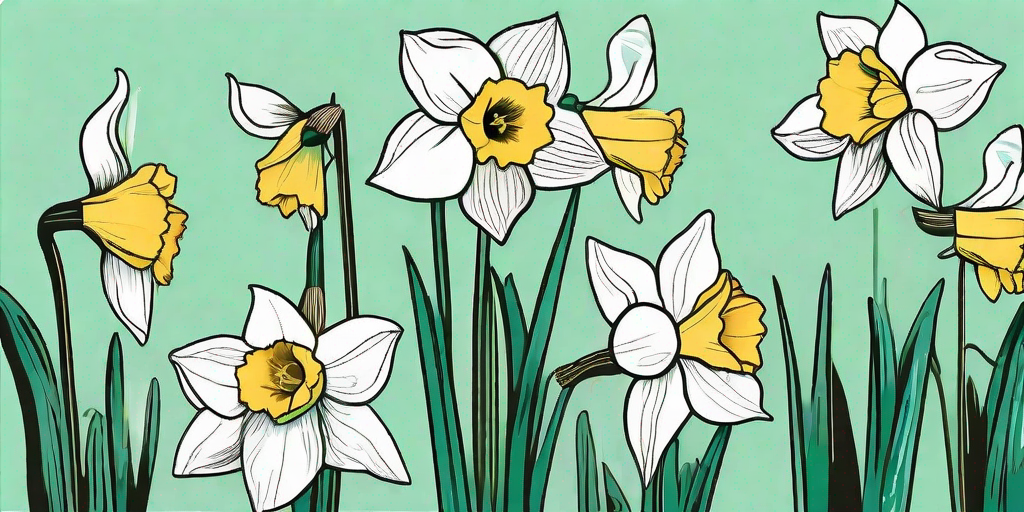
Daffodils, those cheery harbingers of spring, have a way of brightening up any landscape with their vibrant yellow hues. But what happens when the blooms fade and the leaves wither? Do you just toss the bulbs and buy new ones next year? Absolutely not! With the right storage techniques, you can keep your daffodil bulbs healthy and ready for another round of blooming next spring. Let's dive into the secret of storing bulbs like a pro.
Understanding Daffodil Bulbs
Before we get into the nitty-gritty of bulb storage, it's important to understand what a daffodil bulb is. Think of it as a self-contained plant factory. It has everything it needs to produce a new plant, including a miniature flower tucked away inside. It's like a magic bean, but without the risk of a giant climbing down a beanstalk into your garden.
The key to successful bulb storage is to keep this little plant factory in good working order. That means providing the right conditions to prevent the bulb from drying out, rotting, or being eaten by pests. Sounds like a tall order? Don't worry, we've got you covered.
The Art of Daffodil Bulb Storage
Step 1: Digging Up the Bulbs
Timing is everything when it comes to digging up daffodil bulbs. You want to wait until the leaves have turned yellow and started to wither. This is the plant's way of telling you it's done for the season and ready for a long nap. But don't be too hasty with your spade. If you dig up the bulbs too soon, they won't have had enough time to store up energy for next year's growth.
When digging, be gentle. The bulbs are likely to be clustered together, and you don't want to damage them by being too rough. Think of it as an archaeological dig, not a treasure hunt. You're not looking for gold, you're looking for golden blooms next spring.
Step 2: Cleaning and Curing the Bulbs
Once you've unearthed your bulbs, it's time to clean them up. Gently brush off any loose soil, but resist the urge to wash them. Bulbs prefer to be dry, and too much moisture can lead to rot. Once they're clean, lay them out in a cool, dry place out of direct sunlight to cure for a week or two. This helps to harden off the outer skin and prepare the bulb for storage.
While your bulbs are curing, it's a good time to inspect them for any signs of disease or damage. Discard any bulbs that are soft, discoloured, or have a foul smell. Remember, one rotten bulb can spoil the whole bunch, so it's better to be safe than sorry.
Step 3: Storing the Bulbs
Now that your bulbs are clean and cured, it's time to pack them away for their winter hibernation. The key here is to provide a cool, dry, dark environment. A cardboard box or paper bag filled with peat moss, sand, or vermiculite works well. Just make sure the bulbs aren't touching each other to prevent any potential disease from spreading.
Store your packed bulbs in a cool, dry place like a basement or garage. Avoid areas with high humidity or drastic temperature changes. Remember, you're trying to mimic the cool, steady conditions of the ground, not a tropical rainforest or a desert.
Common Mistakes to Avoid
Even the most seasoned gardeners can make mistakes when it comes to storing daffodil bulbs. Here are a few common pitfalls to avoid:
- Storing bulbs in plastic: Plastic bags or containers can trap moisture and lead to rot. Stick with breathable materials like cardboard or paper.
- Storing bulbs in the fridge: While it's true that bulbs need a cool environment, your refrigerator is not the place for them. The humidity levels are too high, and the presence of certain fruits can cause the bulbs to sprout prematurely.
- Forgetting about the bulbs: Out of sight, out of mind, right? Wrong. It's a good idea to check on your bulbs periodically throughout the winter to make sure they're not rotting or drying out.
Frequently Asked Questions
- When should I replant my daffodil bulbs?
- Replant your bulbs in the fall, about 2-4 weeks before the ground freezes. This gives the bulbs time to establish roots before winter sets in.
- Can I leave my daffodil bulbs in the ground over winter?
- In warmer climates, daffodil bulbs can be left in the ground year-round. In colder climates, it's best to dig them up and store them indoors.
- How long can daffodil bulbs be stored?
- With proper storage, daffodil bulbs can be stored for about a year. However, they're best when planted the following fall after they've been dug up.
With these tips and tricks, you're well on your way to keeping your daffodils blooming year after year. Remember, a little effort now can lead to a garden full of golden blooms come spring. Happy gardening!















